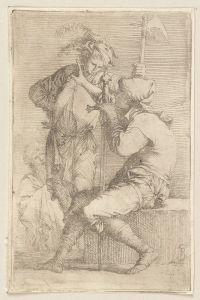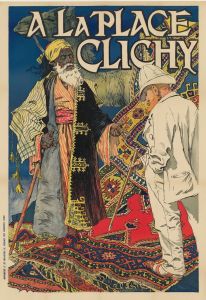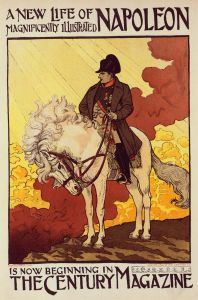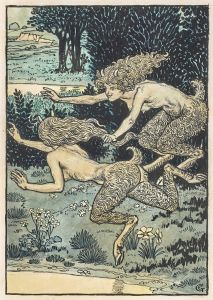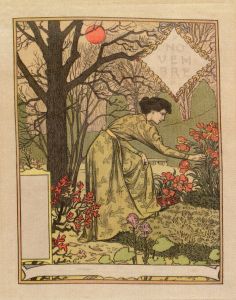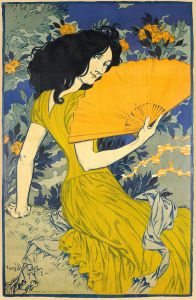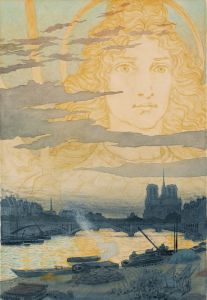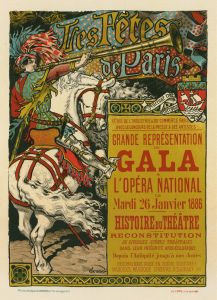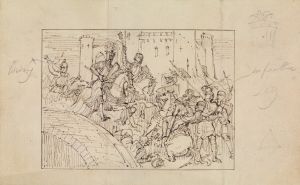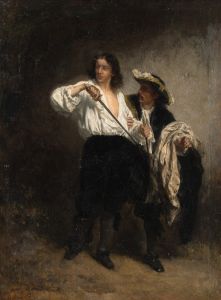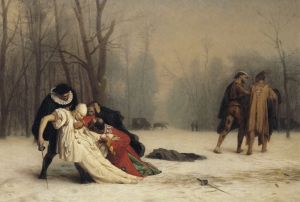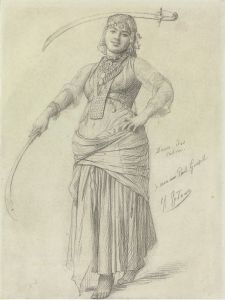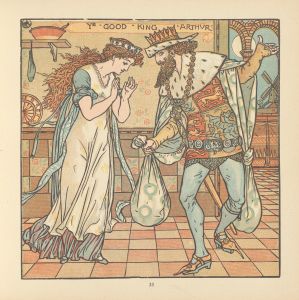
Le duel et l’escrime Un duel judiciaire au VIè siècle
A hand-painted replica of Eugène Grasset’s masterpiece Le duel et l’escrime Un duel judiciaire au VIè siècle, meticulously crafted by professional artists to capture the true essence of the original. Each piece is created with museum-quality canvas and rare mineral pigments, carefully painted by experienced artists with delicate brushstrokes and rich, layered colors to perfectly recreate the texture of the original artwork. Unlike machine-printed reproductions, this hand-painted version brings the painting to life, infused with the artist’s emotions and skill in every stroke. Whether for personal collection or home decoration, it instantly elevates the artistic atmosphere of any space.
Eugène Grasset was a Swiss-born French artist known for his contributions to the Art Nouveau movement, particularly in the fields of graphic design, illustration, and decorative arts. One of his notable works is the painting "Le duel et l’escrime Un duel judiciaire au VIè siècle," which translates to "The Duel and Fencing: A Judicial Duel in the 6th Century." This artwork reflects Grasset's interest in historical themes and his skill in depicting scenes with intricate detail and stylistic elegance.
Grasset was born on May 25, 1845, in Lausanne, Switzerland, and later moved to France, where he became a prominent figure in the Art Nouveau movement. His work is characterized by its decorative style, use of flowing lines, and incorporation of historical and mythological themes. Grasset's background in architecture and decorative arts is evident in his meticulous attention to detail and composition.
"Le duel et l’escrime Un duel judiciaire au VIè siècle" is an example of Grasset's ability to blend historical narrative with artistic expression. The painting depicts a judicial duel, a form of trial by combat that was practiced in medieval Europe. This method of resolving disputes involved two parties fighting in combat, with the outcome believed to be determined by divine intervention. The setting of the 6th century suggests a time when such practices were more common, reflecting the societal norms and legal customs of the period.
In this artwork, Grasset captures the tension and drama of the duel, focusing on the combatants and their surroundings. The figures are rendered with precision, showcasing Grasset's skill in portraying human anatomy and movement. The use of color and line work is typical of Grasset's style, emphasizing the elegance and fluidity associated with Art Nouveau.
Grasset's interest in historical subjects is not limited to this painting. Throughout his career, he explored various themes from history and mythology, often infusing them with his unique artistic vision. His work in book illustration, posters, and decorative arts further demonstrates his versatility and influence in the art world.
While specific details about "Le duel et l’escrime Un duel judiciaire au VIè siècle" may not be extensively documented, the painting remains an important part of Grasset's oeuvre. It exemplifies his ability to convey complex narratives through visual art, combining historical accuracy with artistic creativity.
Eugène Grasset's contributions to the Art Nouveau movement and his exploration of historical themes have left a lasting impact on the art world. His works continue to be studied and appreciated for their beauty, craftsmanship, and historical significance. "Le duel et l’escrime Un duel judiciaire au VIè siècle" stands as a testament to Grasset's talent and his ability to bring the past to life through his art.





